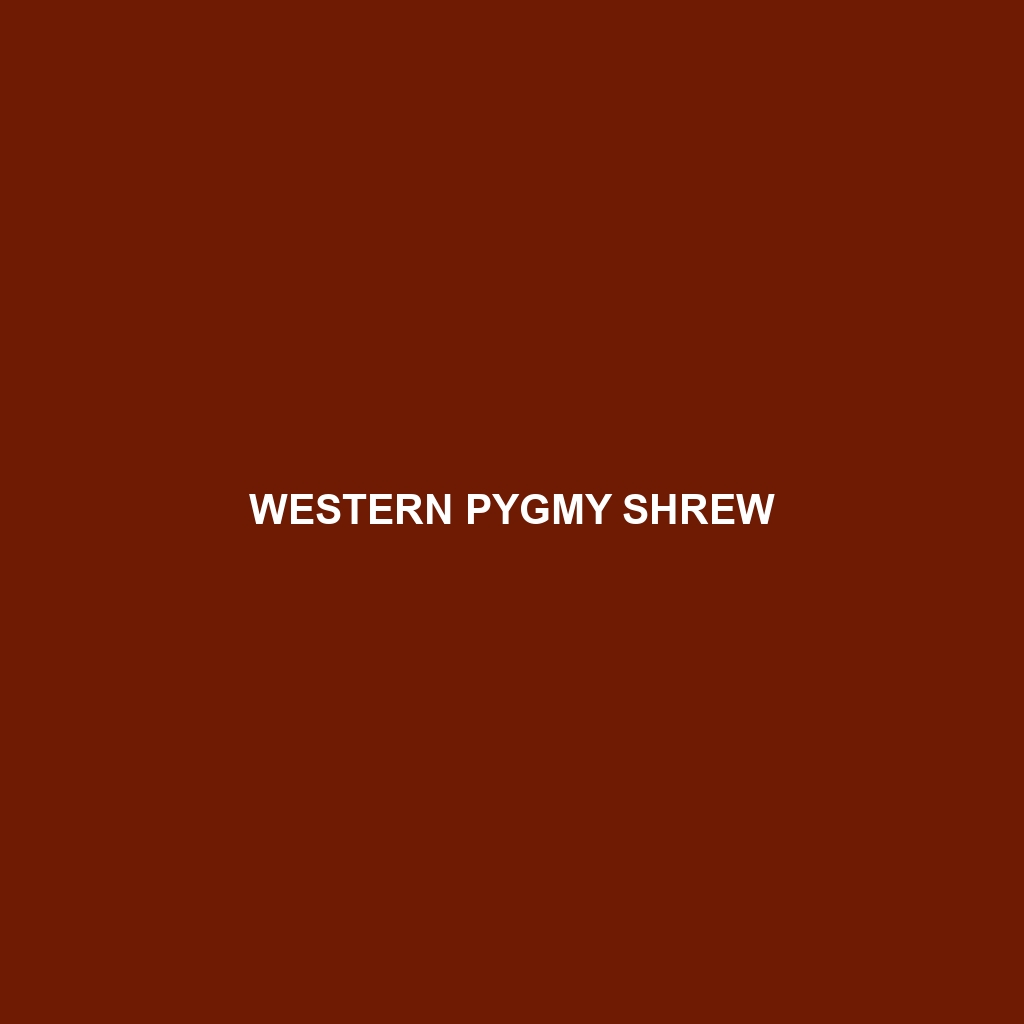Western Pygmy Shrew: A Comprehensive Species Description
Common Name: Western Pygmy Shrew
Scientific Name: Sorex hoyi
Habitat: The Western Pygmy Shrew is primarily found in North America, particularly in the western regions of the United States and Canada. This small mammal thrives in a variety of habitats, including moist forests, grasslands, and wetlands. They prefer environments rich in vegetation and organic litter, which provide cover and ample food sources. Ideal habitats often include areas near streams and dense undergrowth, emphasizing the shrew’s affinity for humid regions.
Physical Characteristics: The Western Pygmy Shrew is one of the smallest mammals, measuring about 6 to 10 cm in length, excluding the tail. They typically weigh less than 10 grams. Their fur is soft and dense, usually a grayish-brown on the dorsal side and lighter underneath. A distinctive feature is their pointed snout, which houses sensitive whiskers that aid in navigation. The Western Pygmy Shrew has small, dark eyes and relatively short limbs, enhancing its ability to burrow and navigate through its habitat.
Behavior: Being primarily nocturnal, the Western Pygmy Shrew is active during the night and spends a significant portion of its time foraging for insects and other small invertebrates. They are known for their energetic movements and can be quite aggressive while hunting. These shrews exhibit solitary behavior, often marking their territory with scent markings. Their high metabolism necessitates continuous feeding, making them crucial predators in their ecosystem.
Diet: The diet of the Western Pygmy Shrew consists mainly of small insects, worms, and other invertebrates. They are known to consume a variety of food sources including beetles, ants, and caterpillars. Due to their small size and rapid metabolism, these shrews must consume food almost constantly, foraging actively throughout the night to meet their dietary needs and sustain their energy levels.
Reproduction: The reproductive habits of the Western Pygmy Shrew start in the spring, with breeding typically occurring between April and July. A female shrew can give birth to a litter of 3 to 7 young after a gestation period of about 21 to 24 days. The young are born blind and helpless, relying entirely on their mother until they are weaned at about three weeks of age. Notable behaviors during the rearing of young include nesting in dense vegetation for protection from predators.
Conservation Status: Currently, the Western Pygmy Shrew is classified as a species of Least Concern by the IUCN, which means it is not considered endangered or vulnerable at the moment. However, habitat destruction and climate change pose potential threats to their populations. Continued monitoring of their habitats is essential to ensure their long-term survival.
Interesting Facts: One fascinating aspect of the Western Pygmy Shrew is its incredibly high metabolism; it must consume food equivalent to its body weight each day to survive. Moreover, it is known to use echolocation to help navigate and hunt in the dark, a relatively rare trait among mammals. This ability enhances its predatory skills in dense habitats.
Role in Ecosystem: The Western Pygmy Shrew plays a crucial role in its ecosystem by contributing to the control of insect populations. As a predator of various invertebrates, it helps maintain a balanced food web. Furthermore, being a prey species for larger predators, including birds of prey and small mammals, it helps support the biodiversity of its habitat.
